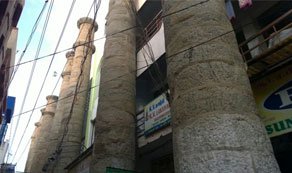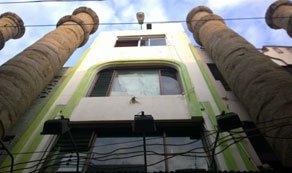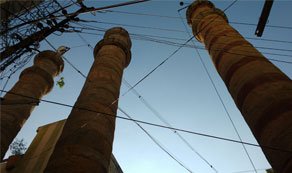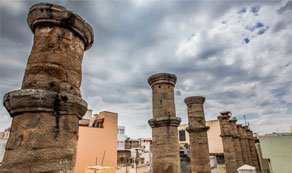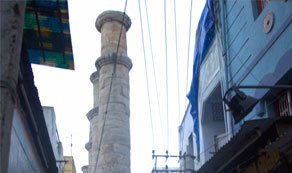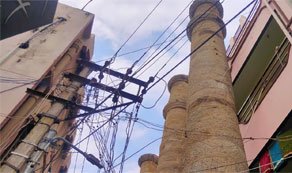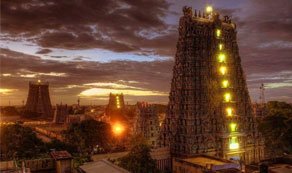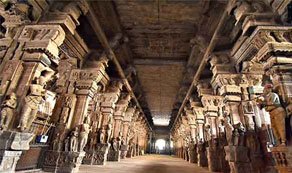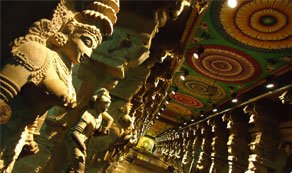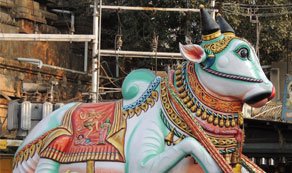Ten Pillars
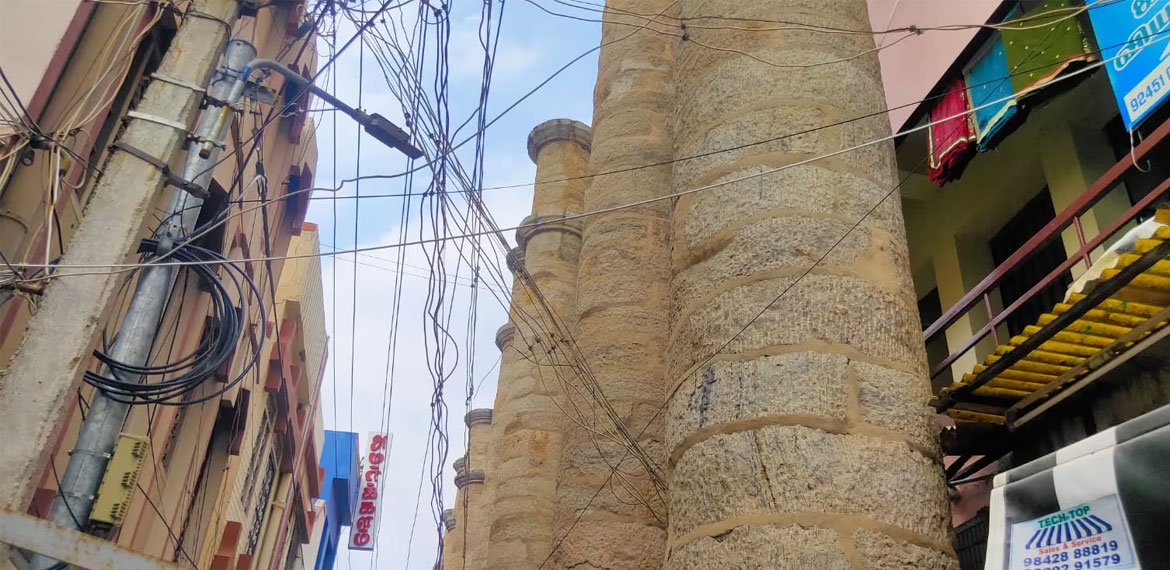
Here are some key points about the history and special features of Ten Pillars:
History:
Swarga Vilasam Palace, now known as Thirumalai Nayakkar Mahal, was built by Thirumalai Nayakkar. Within the grounds of this palace, the Ranga Vilasam palace was constructed in 1636 AD as a residence for Thirumalai Nayakkar's younger brother, Muthiyaalu Nayakkar. Pathu Thoon, or the Ten Pillars, is said to be the frontage of Ranga Vilasam. Other sections of this palace are not present anymore.
R. Venkataraman, a historian specializing in Madurai history, says, "After the life of Thirumalai Nayakkar, the headquarters of the Nayakkar Kingdom changed from Madurai to Trichy. During this time, the valuable segments of the Ranga Vilasam were transported, and the rest were abandoned.". Later, the forts on the north side were damaged during the Madurai invasion of Chanda Sahib and, over time, vanished. Presently, only the Pathu Thoon remain.
Pathu Thoon (Ten Pillars) were declared archeological monuments of Tamil Nadu on July 20, 1973, and are protected by the Tamil Nadu State Department of Archaeology.
Breakage of Wall:
An entrance is said to have been to the east of Pathu Thoon, to the north of Thirumalai Nayakkar Mahal. Its wall was 274 meters long, 183 meters wide, and 12 meters high. The wall was demolished in 1837 as it was in danger of collapsing.
Pathu Thoon Lane:
During the Nayakkar rule, silk weavers from Saurashtra were made to settle in Madurai, near the palace. As silk was a precious product, the weavers lived in guarded streets. When the palace complex was abandoned, they built houses and settled around the Ten Pillars (Pathu Thoon). The lane, which was famous for silk threads, is now crowded with small textile shops.
Cultural Importance:
One of the pillars at Pathu Thoon is adorned with an embossed sculpture of a Shivalingam, adding religious significance to the site. The area around the pillars was once inhabited by silk weavers from Saurashtra, reflecting the cultural diversity and historical significance of Madurai.
Structure:
These pillars were formed by stacking round granite stones. Upon these, lime plaster and bricks were applied to smooth them and make them similar to pillars in the palace. All ten pillars are of the same height and do not have any sculptures. Each pillar is 12 meters high and has a circumference of 1.20 meters. As per the engineers, these pillars were erected to bear the full weight of the Rangamahal palace, constructed out of bricks and plaster. The weight of these pillars stabilized the palace. On one of these ten pillars (Pathu Thoon), a shivalingam sculpture is embossed.



